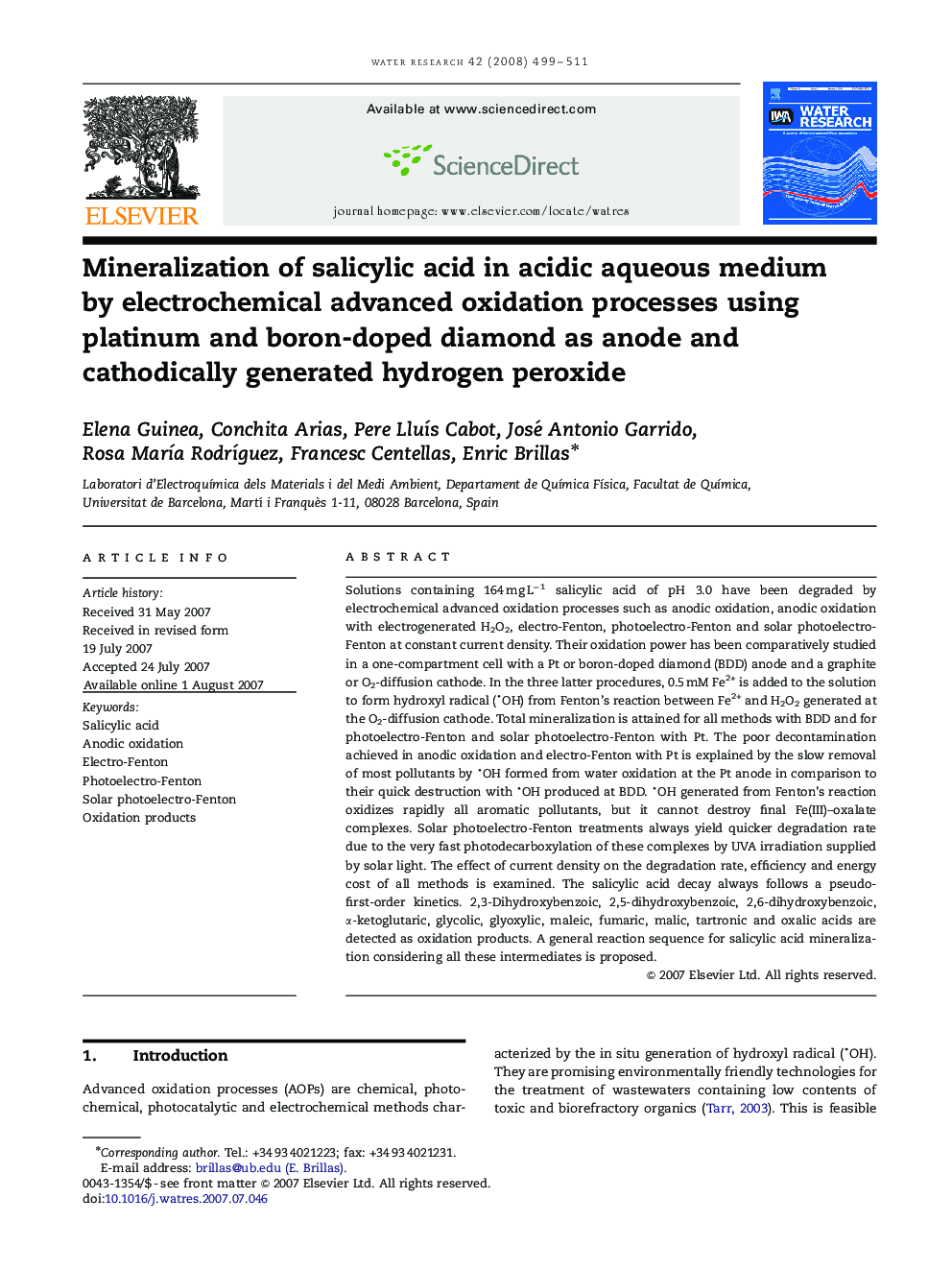| کد مقاله | کد نشریه | سال انتشار | مقاله انگلیسی | نسخه تمام متن |
|---|---|---|---|---|
| 4485785 | 1623125 | 2008 | 13 صفحه PDF | دانلود رایگان |

Solutions containing 164 mg L−1 salicylic acid of pH 3.0 have been degraded by electrochemical advanced oxidation processes such as anodic oxidation, anodic oxidation with electrogenerated H2O2, electro-Fenton, photoelectro-Fenton and solar photoelectro-Fenton at constant current density. Their oxidation power has been comparatively studied in a one-compartment cell with a Pt or boron-doped diamond (BDD) anode and a graphite or O2-diffusion cathode. In the three latter procedures, 0.5 mM Fe2+ is added to the solution to form hydroxyl radical (OH) from Fenton's reaction between Fe2+ and H2O2 generated at the O2-diffusion cathode. Total mineralization is attained for all methods with BDD and for photoelectro-Fenton and solar photoelectro-Fenton with Pt. The poor decontamination achieved in anodic oxidation and electro-Fenton with Pt is explained by the slow removal of most pollutants by OH formed from water oxidation at the Pt anode in comparison to their quick destruction with OH produced at BDD. OH generated from Fenton's reaction oxidizes rapidly all aromatic pollutants, but it cannot destroy final Fe(III)–oxalate complexes. Solar photoelectro-Fenton treatments always yield quicker degradation rate due to the very fast photodecarboxylation of these complexes by UVA irradiation supplied by solar light. The effect of current density on the degradation rate, efficiency and energy cost of all methods is examined. The salicylic acid decay always follows a pseudo-first-order kinetics. 2,3-Dihydroxybenzoic, 2,5-dihydroxybenzoic, 2,6-dihydroxybenzoic, α-ketoglutaric, glycolic, glyoxylic, maleic, fumaric, malic, tartronic and oxalic acids are detected as oxidation products. A general reaction sequence for salicylic acid mineralization considering all these intermediates is proposed.
Journal: Water Research - Volume 42, Issues 1–2, January 2008, Pages 499–511